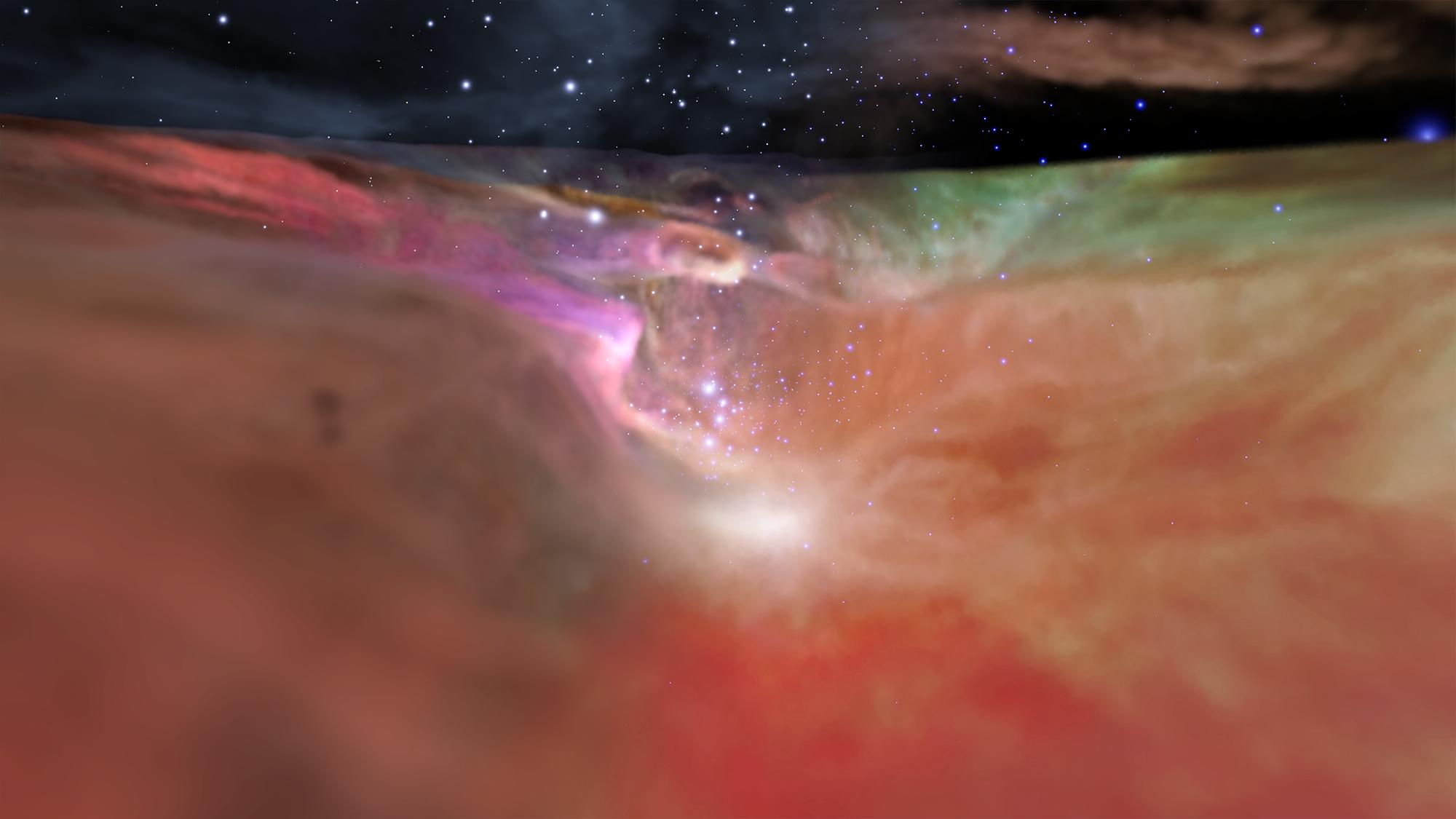2020年8月28日
The Valley of Orion
Visualization Credit: NASA, ESA, F. Summers, G. Bacon,
Z. Levay, J. DePasquale, L. Frattare, M. Robberto, M. Gennaro (STScI) and R. Hurt (Caltech/IPAC)
Explanation: This exciting and unfamiliar view of the Orion Nebula is a visualization based on astronomical data and movie rendering techniques. Up close and personal with a famous stellar nursery normally seen from 1,500 light-years away, the digitally modeled frame transitions from a visible light representation based on Hubble data on the left to infrared data from the Spitzer Space Telescope on the right. The perspective at the center looks along a valley over a light-year wide, in the wall of the region’s giant molecular cloud. Orion’s valley ends in a cavity carved by the energetic winds and radiation of the massive central stars of the Trapezium star cluster. The single frame is part of a multiwavelength, three-dimensional video that lets the viewer experience an immersive, three minute flight through the Great Nebula of Orion.
Tomorrow’s picture: light-dark Mars
穿过猎户座的裂谷
视象化提供: NASA, ESA, F. Summers, G. Bacon,
Z. Levay, J. DePasquale, L. Frattare, M. Robberto, M. Gennaro (STScI) and R. Hurt (Caltech/IPAC)
说明: 这片精采但陌生的猎户座景观,是使用电影演算技术处理的天文数据,建构出来的视象化。这幅数位模型视象,从左侧根据哈勃望远镜数据建构的可见光景观,过渡到右侧的史匹哲太空望远镜红外光景观,让我们得以近距离观赏这个通常远在1,500光年之外的著名恒星育婴室。这片视野的中心,沿着一个宽度超过1光年的裂谷,透视巨分子云在此区域的边墙。这道猎户座裂谷,终止于四边形星团中心的大质量恒星之高能恒星风和辐射,所吹出的空穴。在一部让观者体验身临其境、历时3分钟飞过猎户座大星云的多波段三维影片里,这张单格视象是其中的一部分。
明日的图片: light-dark Mars








能量与质量的结合